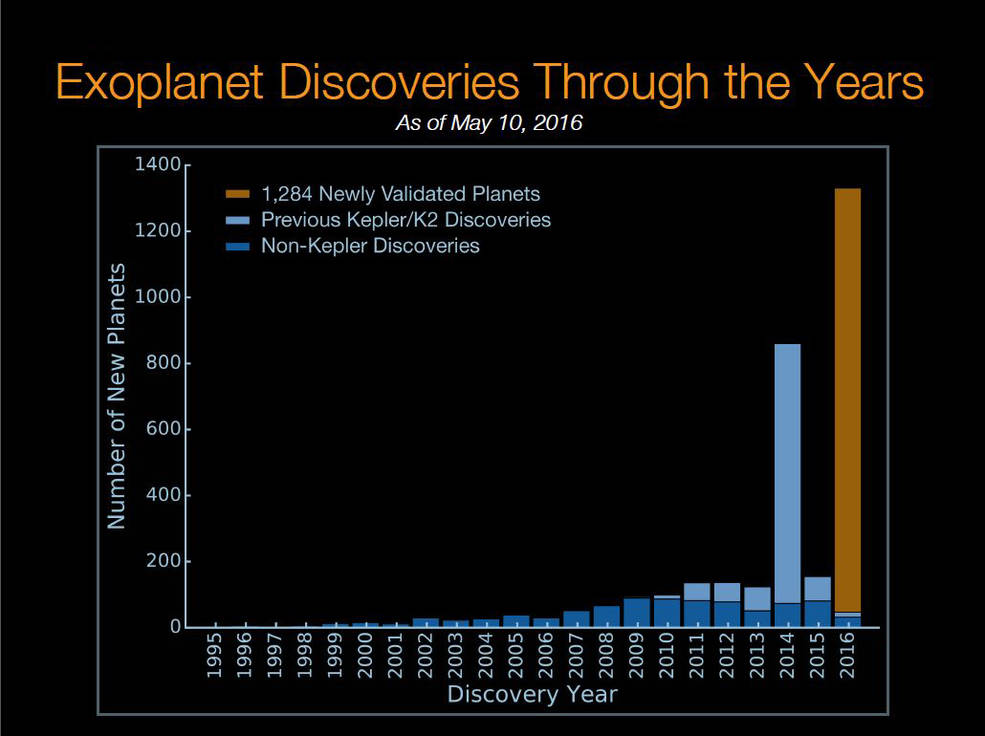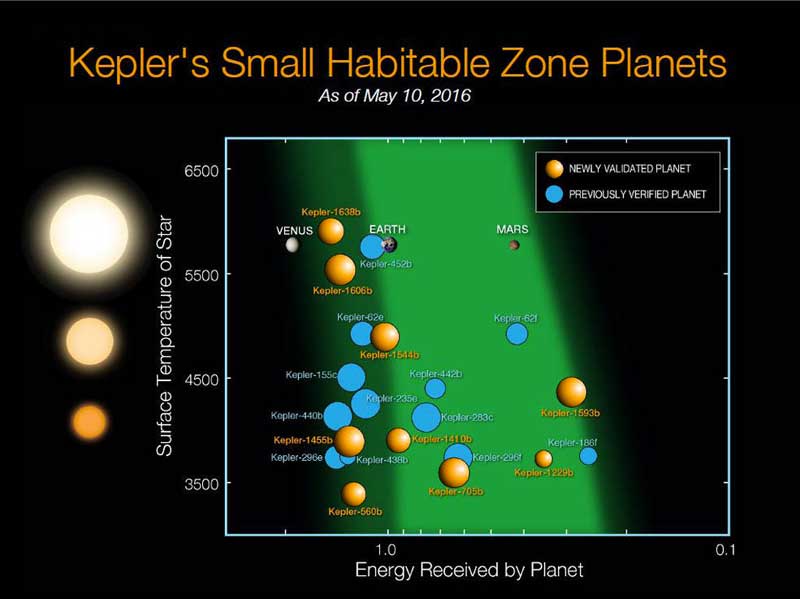Back
10 May 2016
The magic words are always the same: water, pressure Atmospheric, orbit, carbon dioxide and rotation. The fatal combination that makes life possible on a planet is one that scientists around the world seek to incessant manner. Observe, scrutinize, calculate, while millions of people, raising his eyes to heaven, are asking the same question: “Is there anyone else up there?”.
is there life in the Universe? The question that all scientists constantly seeking answers peeps at each new discovery. Great is the attention of the scientific community to the work of Kepler exoplanet hunter
The mission Kepler is a mission NASA space of the Discovery program , whose purpose is research and confirmation of Earth-like planets orbiting stars other than the Sun, through the utlizzo the Kepler space telescope. the spacecraft, named after the German astronomer Johannes Kepler in the seventeenth century, has been successfully launched March 7, 2009.

New exoplanets discovered since 1995. Credit: Ames / W NASA. Stenzel; Princeton University / T. Morton
In the late afternoon, the NASA has confirmed the existence of 1,284 planets outside the solar system, they do part of our Milky Way. 550 of these would be rock as the Earth and nine orbit the star in the “habitable” range with surface temperatures that would allow the presence of liquid water and life forms. You might be interested in: Mercury: photos and video to relive the astronomical event of the year
today’s announcement is the largest ever done on new planets.

the NASA researchers analyzed data from Kepler cataloged until July of 2015, in which were placed 4,302 potential planets: 1,284 of these likely to be effectively a planet exceeds 99 percent, the minimum necessary to attribute to a celestial body not yet identified that state. For other 1,327 it is likely to be the planets, but there are not enough certainty, the remaining 707 are other celestial bodies.
Timothy Morton, of Princeton University (New Jersey) and among those responsible for the new research whose results were published in the Astrophysical Journal, explained with an analogy effective the new method: “the likely new planets are like bread crumbs. If they do fall a bit ‘on the floor, you can pick them up one by one. But if they do drop a whole lot, you’ll need a broom. Statistical analysis is our broom. “
s space telescope detects the extrasolar planets through the transit system (or occultation). Essentially, aims at a star and watch if there are variations in its brightness . Where the latter changes regularly, it is very likely that a large celestial body, such as a planet, may orbit the star itself. Since its launch into orbit in 2009, Kepler has identified more than a thousand exoplanets .
The Universe life remains a mystery. But the simulations, discoveries, theories, leading to the Science one more step in the puzzle of which we too are part.
Learn more:
No comments:
Post a Comment